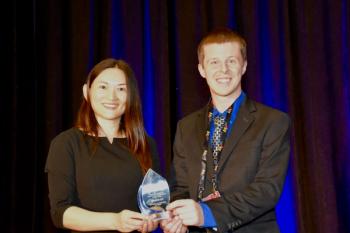
New Microfluidic Optical Cavities Compatible with NMR Spectroscopy
Researchers at the University of Strasbourg have developed NMR-compatible microfluidic optical cavities for vibrational strong coupling (VSC), enabling new insights into molecular behavior under VSC and advancing the field of polaritonic chemistry.
The development of microfluidic optical cavity designed for vibrational strong coupling that is compatible with nuclear magnetic resonance spectroscopy (NMR) can help advance polaritonic chemistry, according to a recent study published in Angewandte Chemistry (1).
Polaritonic chemistry is the study of the interactions between light and matter under strong coupling (1,2). Over the past few years, the field has made significant strides (2). However, one of the critical challenges has been the limited range of spectroscopic techniques that can be applied in situ to observe these interactions (1). The new study, led by J. Moran and T. W. Ebbesen from the University of Strasbourg, sought to address this limitation by creating microfluidic optical cavities that can be used in conjunction with standard liquid NMR tubes.
According to the study, the development of these NMR-compatible cavities has made it possible to observe how VSC influences the equilibrium between two conformations of a molecular balance sensitive to London dispersion forces (1). This is a significant achievement because it allows scientists to directly monitor the effects of VSC on molecular systems.
Under VSC, there is an observable change in the equilibrium constant between the two molecular conformations. However, in all compounds studied, VSC did not induce detectable changes in chemical shifts, J-couplings, or spin-lattice relaxation times (1). This unexpected finding suggests that VSC does not substantially alter molecular electron density distributions (1). As a result, this finding challenges one key preconceived notion: the mechanisms that drive the changes observed under VSC are more complex (1).
The researchers noted in their study that the expected VSC-induced charge redistributions are minimal; as a result, they cannot fully explain the significant changes in molecular properties observed under strong coupling (1). Instead, the research points to the emergence of collective behavior and modifications in solute-solvent interactions as critical factors (1). Additionally, changes in vibronic coupling and entropy, which are dependent on molecular symmetry, appear to play a pivotal role in the observed effects of VSC (1).
By providing a method to directly observe these processes using NMR spectroscopy, the study opens upopens new avenues for research. It enables scientists to study a broader range of chemical systems under VSC, which were previously inaccessible, thereby enhancing the fundamental understanding of how light-matter interactions can alter chemical reactivity and properties (1).
The ability to also use NMR spectroscopy in the monitoring of VSC experiments is also significant. This could lead to new discoveries and a deeper understanding of how molecular systems behave under strong coupling conditions, which in turn can advance polaritonic chemistry research moving forward.
Moreover, the development of the NMR-compatible microfluidic optical cavities is expected to make VSC experiments more accessible to non-specialists (1). This democratization of the technology could accelerate research in the field, leading to a broader adoption of polaritonic chemistry in various scientific disciplines (1).
Therefore, the study provides new insights into the mechanisms of VSC, and it also equips researchers with a powerful new tool to explore the interactions between light and matter, which can advance numerous scientific disciplines and propel them into the future (1).
References
(1) Patrahau, B.; Piejko, M.; Mayer, R. J.; et al. Direct Observation of Polaritonic Chemistry by Nuclear Magnetic Resonance Spectroscopy. Angewandte Chem. 2024, 63 (23), e202401368. DOI:
(2) Ebbensen, T. W.; Rubio, A.; Scholes, G. D. Introduction: Polaritonic Chemistry. Chem. Rev. 2023, 123 (21), 12037–12038. DOI:
Newsletter
Get essential updates on the latest spectroscopy technologies, regulatory standards, and best practices—subscribe today to Spectroscopy.




